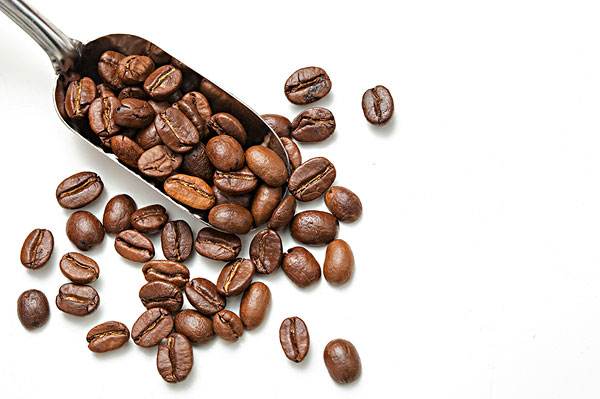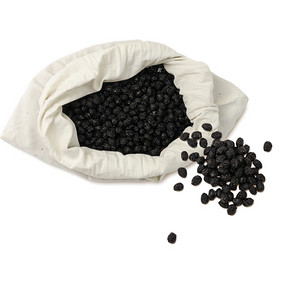Arabica Coffee Bean Classification
Follow the caf é (Wechat official account vdailycom) and found that Beautiful Cafe opened a small shop of its own.
Arabica beans are an important kind of commercial coffee with a fruiting period of less than three years and a high-quality aroma and sour taste. Arabica coffee beans are mainly produced in South America (except parts of Argentina and Brazil), Central America, Africa (Kenya, Ethiopia and other places, mainly East African countries), Asia (Indonesia, parts of Yemen, India, Papua New Guinea).
Brief introduction:
Arabica (Arabica) is one of two very important varieties in the commercial coffee industry, and another important variety is Robusta.
Features:
Taste: rich and delicate, strong smell, high acidity, slippery texture: not easy to have bitter taste
Chromosomes: 44 chromosomes
Caffeine: lower than Robusta
Price: high.

History:
The origin of the Arabica species (Coffea arabica) is the Abyssinia Plateau of Ethiopia (Abyssinia, now known as the Ethiopian Plateau). In the early days, it was mainly eaten as medicine (Islamic monks used as a secret medicine to cure the body and mind or to awaken the brain), developed the habit of baking and drinking in the 13th century, introduced into Europe through the Arab region in the 16th century, and became a favorite drink all over the world.
Variety:
(1) native species
Arabica coffee accounts for 70% of all coffee production, and its excellent flavor and aroma make it the only coffee that can be drunk directly. However, its resistance to dryness, frost, diseases and insect pests is too low, especially the natural enemy of coffee-leaf rust, so all producing countries are committed to variety improvement.
It turned out that all the commercial coffee in the world was small-grain coffee, but it was only at the end of the 19th century that growers began to look for other disease-resistant varieties because of the collapse of a large number of coffee farms caused by leaf rust.
Small-grain coffee is still the most important coffee variety, accounting for about 3% of the world's total coffee production. It is mainly grown in Latin American countries, but also partly in Indonesia and the Pacific islands. The geographical and climatic conditions of Brazil, the largest coffee producer in the world, are very suitable for the growth of small-grain coffee, and the main coffee varieties planted are also small-grain coffee. Brazil's coffee production accounts for more than 1% of the world's total output. The fruit of small-grain coffee is smaller than that of medium-grain coffee and large-grain coffee. The berries are oval and generally contain two seeds, the so-called "coffee beans".
(2) subspecies
The three early subspecies in the Arabica species (Coffee arabica) series are: blue mountain subspecies (Varietal Blue Mountain), Tibica subspecies (Varietal Typica) and bourbon species (Varietal Bourbon).
Jamaican Blue Mountain is an excellent coffee; Tibica, native to Ethiopia and southeastern Sudan, is the most widely cultivated variety of coffee in the Western Hemisphere; and Hawaii's Kona, which has a high yield in Hawaii, is comparable in quality to Blue Mountain coffee, with a price difference of only $1 to $3.
The bourbon species was introduced to America by French immigrants in the 18th century from the island of Islandof Bourbon (today's French island of Reunion Islandof Reunion, located in the Indian Ocean east of Madagascar). It is now widely cultivated in the Western Hemisphere, such as Brazil, and a small amount in Yunnan, China. The caffeine content of Bobang subspecies is 20% to 30% higher than that of Tibica subspecies, but less than most coffee subspecies. At first, the main branch and the trunk grew upward at 45 degrees, and drooped with the fruit load. The lateral branches are denser, the fruit is more, and the yield is higher, but the berries are smaller and mature faster, so they are not resistant to strong wind and heavy rain. Bourbon coffee is a variety of small-grain coffee second only to Tibica, with more fruit, higher yield, but smaller berries and slower ripening. The small-grain coffee grown in Yunnan, China is mainly Tibika and Bobang subspecies. From the botanical point of view of coffee, Yunnan small-grain coffee is genetically close to the best blue mountains of Jamaica (Jamaica Blue Mountain) and Kona of Hawaii.
Planting situation in China:
Arabica is deeply loved by Chinese people with a short history of coffee contact because of its strong fruity aroma. it was introduced to China by missionaries in the 19th century and widely planted in Panzhihua, Sichuan, and the dry-hot valley of the Jinsha River above 1000 meters in western Yunnan. The sunshine in this area lasts for a long time and there is a great temperature difference between day and night. The local people solve the problem of insufficient seasonal rainfall by diverting water up the mountain, resulting in a unique aroma of "Chinese coffee". Among them, Banpo coffee grown in Arabica in Panzhihua, Sichuan is the most. Compared with Yunnan and Hainan, Panzhihua in the dry-hot valley has longer sunshine, higher altitude, greater temperature difference, good light quality and more virgin land. it is a rare and most suitable area for growing Arabica coffee. Banpo coffee farmers take advantage of this advantage to adopt unique planting and processing technology: first, "do not land on the ground": from collecting coffee beans to processing into finished products, coffee has been kept free from soil and other sundries to ensure its taste and quality; second, "graded collection": since coffee beans are not uniform and mature, coffee beans of the same level are collected centrally rather than mixed together. Such as manual operation, the use of a large number of labor force to collect, classify and process. The coffee here has a rich aroma, bitter balance and fruit flavor, which is very popular with consumers and foreign coffee beverage giants.
Important Notice :
前街咖啡 FrontStreet Coffee has moved to new addredd:
FrontStreet Coffee Address: 315,Donghua East Road,GuangZhou
Tel:020 38364473
- Prev

How about Arabica coffee?
Following Cafe (Wechat official account vdailycom) found that Arabica can become the aristocrat of coffee beans, the most precious variety and enjoy the highest honor, depending on the high standards of its growing environment. Arabica coffee is generally thought to be native to the Ethiopian plateau and is widely distributed in the tropics.
- Next

How about Arabica coffee? what kind of Arabica coffee
Following caf é (Wechat official account vdailycom) found that the coffee beans of Arabica species (Arabica) in Arabica were first grown in Ethiopia. The raw materials of coffee beans used as drinks were brought to Yemen in the 6th and 9th centuries, but at that time they were only transported by seeds. It was not until 1699 that the Dutch East India Company
Related
- Detailed explanation of Jadeite planting Land in Panamanian Jadeite Manor introduction to the grading system of Jadeite competitive bidding, Red bid, Green bid and Rose Summer
- Story of Coffee planting in Brenka region of Costa Rica Stonehenge Manor anaerobic heavy honey treatment of flavor mouth
- What's on the barrel of Blue Mountain Coffee beans?
- Can American coffee also pull flowers? How to use hot American style to pull out a good-looking pattern?
- Can you make a cold extract with coffee beans? What is the right proportion for cold-extracted coffee formula?
- Indonesian PWN Gold Mandrine Coffee Origin Features Flavor How to Chong? Mandolin coffee is American.
- A brief introduction to the flavor characteristics of Brazilian yellow bourbon coffee beans
- What is the effect of different water quality on the flavor of cold-extracted coffee? What kind of water is best for brewing coffee?
- Why do you think of Rose Summer whenever you mention Panamanian coffee?
- Introduction to the characteristics of authentic blue mountain coffee bean producing areas? What is the CIB Coffee Authority in Jamaica?

